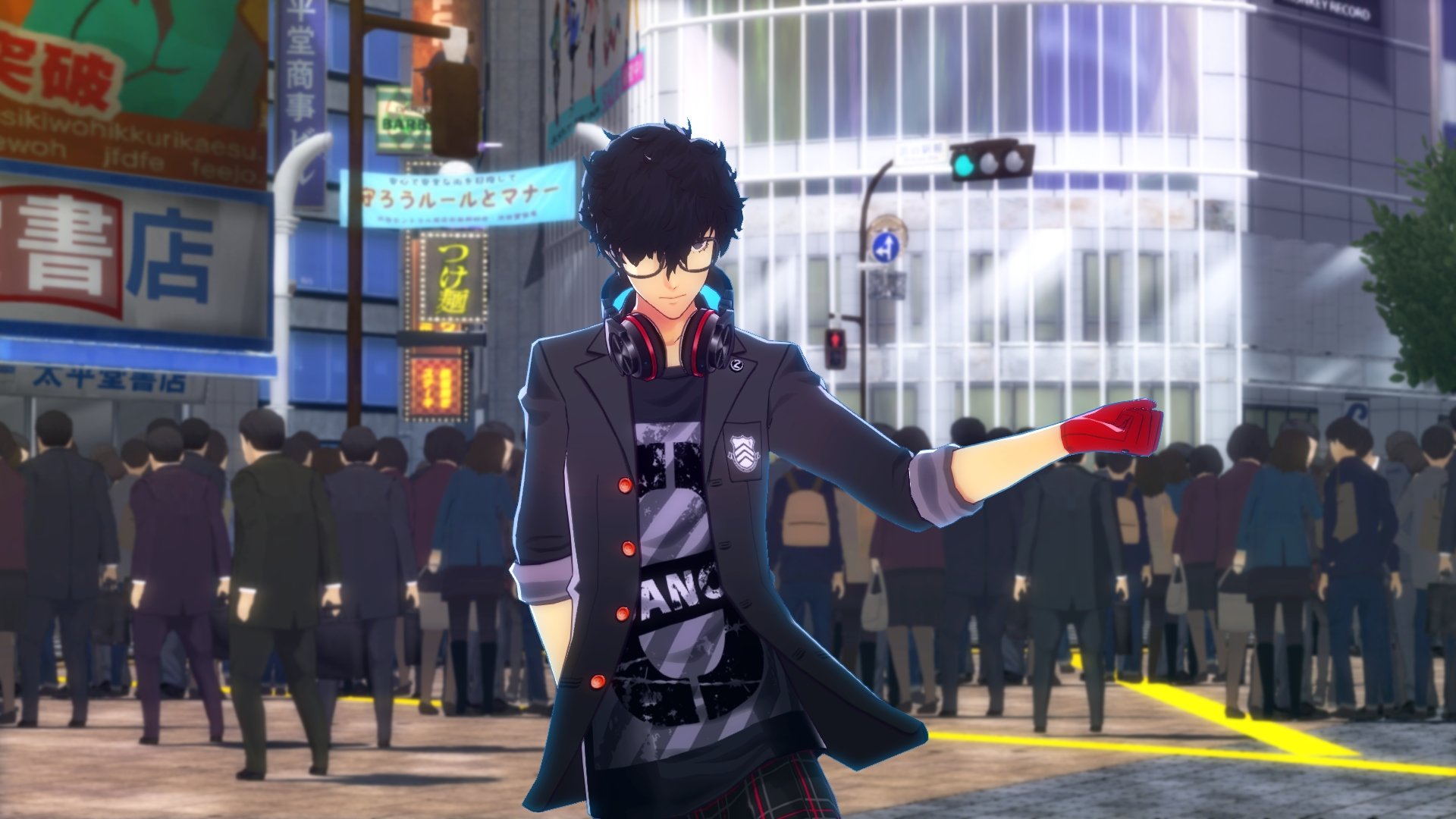Heart, stolen
Despite casting a wide net as far as the Shin Megami Tensei fandom is concerned, Persona 5 still exists within a niche. Not everyone is going to want to play a surrealistic romp through the country of Japan while accompanied by a talking cat and that’s okay.
Even fewer people will embark upon a musical journey within the world of Persona 5, and that’s equally fine.

Persona 5: Dancing in Starlight (PS4 [reviewed], Vita)
Developer: P-Studio
Publisher: Atlus (WW), Deep Silver (EU)
Released: May 24, 2018 (JP) / December 4, 2018 (WW)
MSRP: P3/P5 PS4 ($59.99), P3/P5 Vita ($39.99), P3/P4/P5 PS4 ($99.99)
Like many rhythm games of yesteryear, icons pop up on-screen and you have to hit them. Up, left, down, triangle, circle, X and the occasional analog stick: that’s all you need to pick up Persona 5: Dancing in Starlight and start playing. Sorta.
From there you need to grasp the concept of unison (multi) notes, holds (duh) and double notes (tap tap), as well as the “scratch” mechanic that takes some getting used to (the lines that denote analog input can be hard to notice at first). For rhythm enthusiasts it’s something you’ll innately pick up, for everyone else there’s a bit of a curve. I for one adore its simplicity and the challenge the harder difficulty setting provides. The game throws more notes at you but not a lot of concepts, allowing the music to breathe.
But the best part of Dancing in Starlight is the world itself, as the source material greatly benefits the rhythm core. If you’ve played Persona 5 before you’re going to get a lot out of it. It’s mostly in the realm of extra interactions between cast members and the like but the personality of Persona 5‘s heroic Phantom Thieves of Hearts crew shine through here. You know how if you were doing well in PaRappa the Rapper and achieved “U Rappin Cool” the scene would change? This has that. Depending on whether or not you hit certain series of bars your friends will pop in and dance it up, which never fails to put a smile on my face.
I also dig the clear unlock goals for extra social interactions, the fully subbed (or dubbed) toggle for vocals and the fun costume unlocks. Witnessing Morgana (the aforementioned feisty cat) interact with literally anyone is enough to get me to care about otherwise meaningless challenges and outfits that Atlus banks on far too often.
True to Persona form there’s a heavy emphasis on progression in the form of a (mostly dialogue-heavy) campaign, but I wanted to see more modes…and songs for that matter. Taking a look at the bigger picture, what Atlus ended up doing is splitting up one giant game into three, as Persona 3, 4, and 5 all have their own entries in this subseries. The thing is, all of them could have stood to be bigger. Alterations and rule parameters are nice when you really want to get granular and play a certain song over and over, but once you’re done you really need to love the music to stay involved. And I do.
Persona 5 is comprised of some of the best music in gaming history, period. That’s not just true of the mainline entry, but having played all three Persona rhythm games I can say that’s true of Starlight as well. The score is funky as hell and the Japan locales that you’re dancing around in really sell it. The soundtrack is also not overly busy: there’s plenty of come down periods in longer songs and adorable chatter during dances (which you can toggle off). Most of the top Casey Kasem favorites (Life Will Change, Keeper of Lust, Will Power, Beneath the Mask) are included in the 26-strong setlist.
Persona 5: Dancing in Starlight knows its audience within its audience. It’s one of the more engaging rhythm games I’ve played to date, even if I wish it was open from the start and had more to do. Like the Phantom Thieves, I have to follow my heart; and it sides with the music.
[This review is based on a retail build of the game provided by the publisher.]









